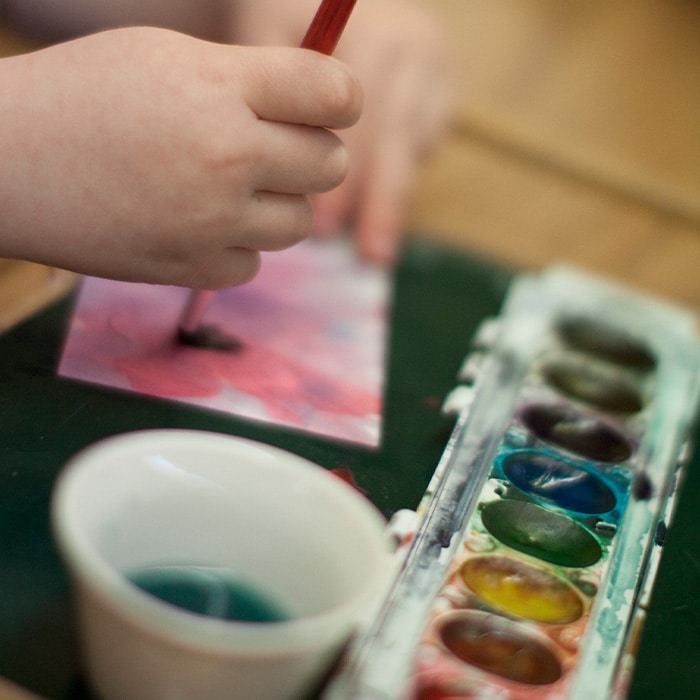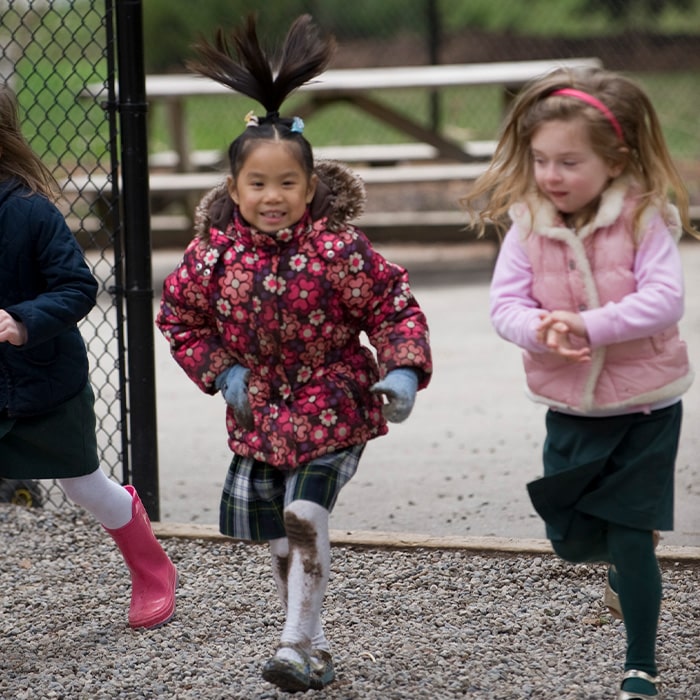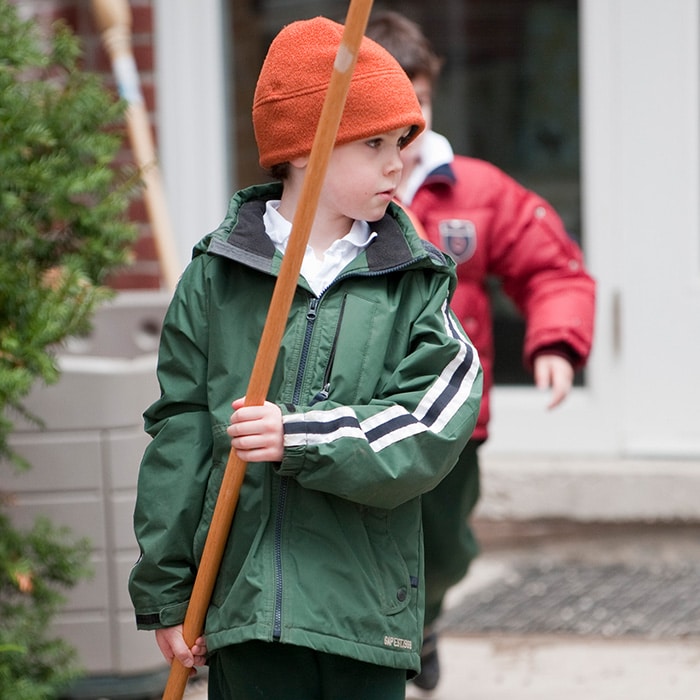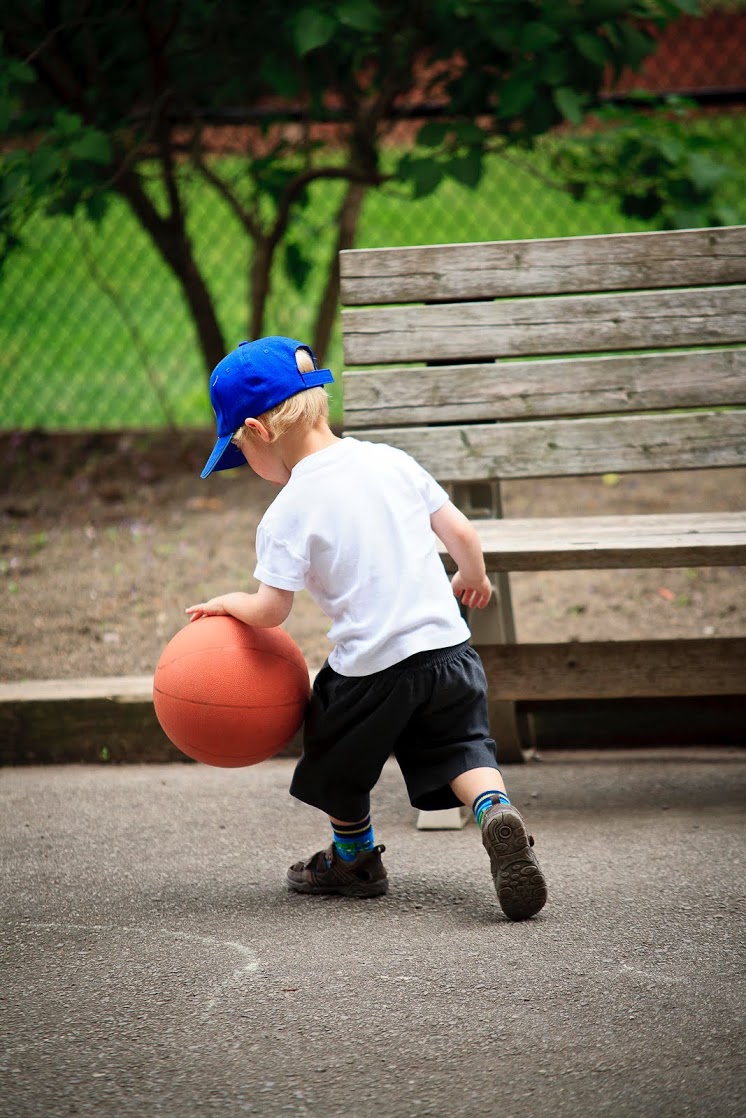Programs
Specialty subjects
Admissions
If you are interested in exploring Clanmore as an option for your family, a good first step would be to attend one of our Open Houses.
French
“The senses, being explorers of the world, open the way to knowledge. Our approach for educating the senses offers the child a key to guide his explorations of the world.”
Maria Montessori (The Absorbent Mind)
Casa
Based around the Accelerated Integrated Methodology (AIM), our Casa French program aligns well with the Montessori philosophy, and allows even very young students to rapidly develop fluency skills. The children are provided with kinesthetic, auditory and visual acquisition of the language through the use of stories, drama and music. The program is supported with gestures, storytelling, active collaboration, and group repetition.
Lower Elementary
Our French program at this level continues with the AIM, which ensures students successfully and rapidly build proficiency in a second language. The methodology uses storytelling, drama, songs, and dance and music to allow language development to be supported and nurtured within a familiar and predictable context. The expansion of vocabulary and development of grammar concepts are firmly supported in the stories that become well embedded in the students’ minds. Students continue to develop their work with gestures, double verb conjugation and the negative form. They are introduced to the near future tense and begin written work in cahiers.
Upper Elementary
The AIM used at the Upper Elementary level ensures the successful and rapid building of proficiency. Students continue to build on what and how they learned in lower elementary and begin to explore the conjugation of both regular and irregular verbs in the present tense. At this level, students continue their written work and broaden their skills in creative writing through retelling.
Middle School
AIM is also used in our Middle School French classes. Our program focuses on developing strong communication skills through kinesthetic activities using an integrated, drama-based approach. Although oral communication skills are emphasized, appropriate exposure to the written word, and the opportunity to develop reading and writing skills in tandem occurs. At this level, students will be able to fluently speak, read or write intermediate to advanced French. In preparation for High School, we also cover all conjugations and grammar.


Music
“There should be music in the child’s environment, just as there does exist in the child’s environment spoken speech.” Dr. Maria Montessori
Toddler
Music is a profoundly human activity that benefits the children in many respects: it is a study of who we are culturally, a mechanism for self-expression, a mathematical activity, a nurturer of the development of cognition, a supporter of collaboration, and a form of communication.
In the Toddler environment specifically, the music curriculum helps to develop the child’s nonverbal affective communication, it helps to increase their understanding and enjoyment of music within our culture, and it helps to enhance the child’s ability to express themselves musically. The program begins with gross body movement and the development of the ear. There are many opportunities for the children to experience music through games, songs, dance, rhythm activities, and special events. At times classical music is played quietly in the classroom during the day.
Casa
At the Casa level, the music curriculum addresses all aspects of musical learning.
Listening: Voices, instruments, poetry, stories, and a variety of music pieces.
Singing: Vocal exploration, short/long sounds, animal voices, poetry, and song.
Moving: Introduction to steady beat and rhythm, gross and fine motor movement activities, and dance.
Playing: Introduction to simple percussion instruments, the Montessori Bells, barred instruments, use of mallets and drums, etc.
Reading & Writing: The simple reading and writing of music using the Montessori Bells is also available for those children who express interest.
Lower Elementary
Children are presented with the five basic components of music education:
Movement: Involves body awareness, finger play, expressive, stationary and travelling movement and dance
Listening: Starts with differentiating sounds (nature’s voices), stories, poetry, instruments, songs and a variety of music
Singing and chanting: Starting with the exploration of sounds made by the voice, culminating in in-tune, and in-pitch singing of easy songs
Playing of instruments: Beginning with maintaining steady beat on a variety of instruments, e.g. rhythm sticks, drums, barred instruments, bells etc., gradually leading towards simple ensemble work.
Improvisation and experimentation in creating soundscapes.
Notation: After much experience of music and ear development, the children are presented with graphic notation, learned in conjunction with Curwen hand signs, duple and triple rhythm patterns, the quarter note rest and simple so-mi-do patterns in addition to music dynamics.
On-site piano lessons by private arrangement become an option at the Elementary level onwards.
Upper Elementary
The Upper Elementary students continue with the five basic elements of music education:
Movement: Singing games, expressive movement and exploration of weight, space, time, and flow and dance
Listening: Developed using folk songs, related music of different genres e.g. classical, jazz, folk and instrumentsal
Singing and chanting: Voice building with folk, traditional songs and round singing
Playing of instruments: From steady beat to alternating beat to playing melodic motifs, root melody and ensemble work with addition of ostinati
Notation: Recognize and compose with duple and triple rhythms, dynamics, rests and simple melodic patterns
Middle School
Music in the world around us, as an element of personal, creative expression.
Reflect: Responses to the ways music makes us feel and think.
Create: Compose pieces on various instruments. Create soundscapes to various artworks and alliteration pieces. Use electronic means to create rhythms and pieces.
Connect: Understand how musical forms come to be. How different cultures borrow and share various musical traditions.
Question: Break pieces apart to understand basics. Question where pieces originate from.
Perform: Both solo and ensemble. Building confidence in chosen instruments.

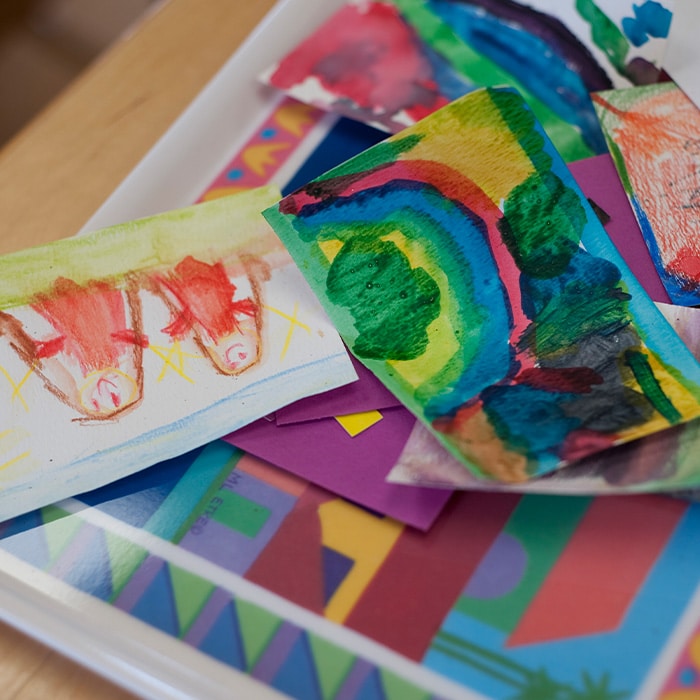
Art
“Imagination does not become great until human beings, given the courage and strength, use it to create.” Dr. Maria Montessori
Toddler
Our art curriculum begins at the Toddler level and is an opportunity for self-expression.
Children of this age are developing their manual control and dexterity. Art is always initiated by the child and is always about the process rather than the product. Art is integrated into the Toddler program daily, with opportunities to draw, use chalk and paint with watercolors or tempera paint at the easel. Stamping, dabbing, play-dough, clay, gluing and cutting with scissors allow for regular use of the child’s fine motor skills while beginning the process of developing an appreciation for line, colour, shape and texture. Art appreciation is integrated into the curriculum through displays in the classroom, as well as through books and cards.
Casa
Continuing from the Toddler curriculum, art is also integrated into the daily lives of the children at the Casa level. Each child works at his or her own pace. Children are introduced to the elements of design such as line, colour, texture, shape, space, and form through the exploration of various media. Carefully designed exercises include: colouring, drawing, pastels and crayons, watercolour painting, cutting, gluing and tracing, with the introduction of simple art tools. Repeated experimentation and observation lead to a great appreciation of the work, their own and that of others.
Lower Elementary
At the Lower Elementary level, the child begins to appreciate that art appears in a variety of places and each individual has a unique style. Artists, art history, and the language of artists is introduced. Students develop an understanding that almost any material can be an art medium.
One of the objectives is familiarity with various artists (past and present), still life, portraiture, and abstract drawing; collage, print-making, sculpture, painting, and crafts. This reinforces an awareness of the different disciplines of art.
Upper Elementary
Upper Elementary students begin the development of art techniques and are reminded of the design elements of colour, line, shape, form, space, and texture. They delve into design principles to further increase their ability to express moods of colour and value intensities, while continuing with their exporation in drawing, painting, printmaking, sculpting, textile arts, and crafts. Concentration is on the principles of art and design: rhythm, balance, variety, emphasis, movement and repetition is integral to their work as they gain knowledge of the structure of art.
Middle School
Middle School students work to advance their skill and understanding of how art functions. Added principles of contrast, proportion, unity, and advanced understanding of new forms of balance are introduced. The art history at this level focuses on Canadian art and The Group of Seven. The Middle School is guided in abstract thinking and designing strategies. Art media and technical abilities are further refined.


Physical education
“Movement, or physical activity, is thus an essential factor in intellectual growth, which depends upon the impressions received from the outside. Through movement we come in contact with external reality, and it through these contacts that we eventually acquire even abstract ideas. Maria Montessori (The Secret of Childhood)
Toddler
Physical Education is part of daily life in the toddler environment and on the playground (or gym during inclement weather). Big movement is often integrated into the daily work presented during the work cycle, and the children are given a great deal of freedom to move at all times. Language pertaining to movement and parts of the body is introduced.
Casa
This stage of development is one of near constant movement. The Montessori Casa environment recognizes and respects this intense need for movement and is therefore designed to naturally promote and support movement through meaningful activity. Opportunities for the development of coordination of both gross and fine motor skills are provided.
In addition, the children participate in many music and movement activities such as dancing, marching, stretching, leaping, running, balancing, and group games in the gym. They spend time outdoors in the gardens, on nature walks and in the playground. Free play activities encourage respect of self and others, cooperation, and community.
Elementary
The goals of the program are to enhance physical growth and development, to develop physical skills, to nurture confidence in one’s own abilities and interactions with others, and to develop an appreciation of the value of physical fitness. Physical education activities are always geared towards specific skills development and are age appropriate.
While our elementary classrooms are a veritable hive of physical activity, we do complement this with a more structured physical education program. The program focuses on physical fitness (development of strength, endurance, and flexibility), health (nutrition, hygiene, and for the upper elementary students, puberty), movement (both loco and non-loco motor), sports/games (safety, following instructions, teamwork, taking turns, understanding rules, sharing, spatial awareness, sportsmanship, and an introduction to competition and its place in sport/games).
Supporting the development of courage, self-esteem and confidence through athletic endeavour is central to our program. There is a focus on fairness in game-playing, safety, respect for others, working together as a team, offering support for one another and, of course, fun.
The children participate in regular brisk walks in the surrounding playing fields and woodland areas. This helps promote the enjoyment and discipline involved in regular exercise.
In years 4-6, the children train and attend both cross-country and track and field meets in conjunction with the Private School Athletic Association (PSAA).
Middle School
Adolescence is a time of self-discovery. Dr. Montessori describes this as the age of the Social Newborn because adolescents spend much of their time trying to understand how they fit within the larger adult society while identifying their own individual values and emerging identities. Key to this development is the adolescent need for self-expression and fostering a sense of confidence. Through creative expression, physical experiences, and language activities which emphasize both interpersonal and intrapersonal communication, adolescents at Clanmore have a robust variety of self-expression opportunities. These include traditional & performing arts, music, language, seminar, journaling and physical expression and education.
Clanmore adolescent students participate in a variety of team sports, fitness drills, and physical activity outings including PSAA inter-school competitions. Activities emphasize an openness to physical expressions through teamwork, sportsmanship, leadership, and personal fitness goals. At the beginning of each school year, students are challenged to learn more about their personal strengths during Odyssey, an 8-day canoe trip. This community outing helps students form a supportive community, no matter their physical fitness level. Throughout the two-year program, students also discuss nutrition, body systems, human development and puberty, and physical and mental wellness.
“What happens when these
kids enter the “real world”
of education? How are they going to adjust?” WE ANSWER
YOUR QUESTIONS…
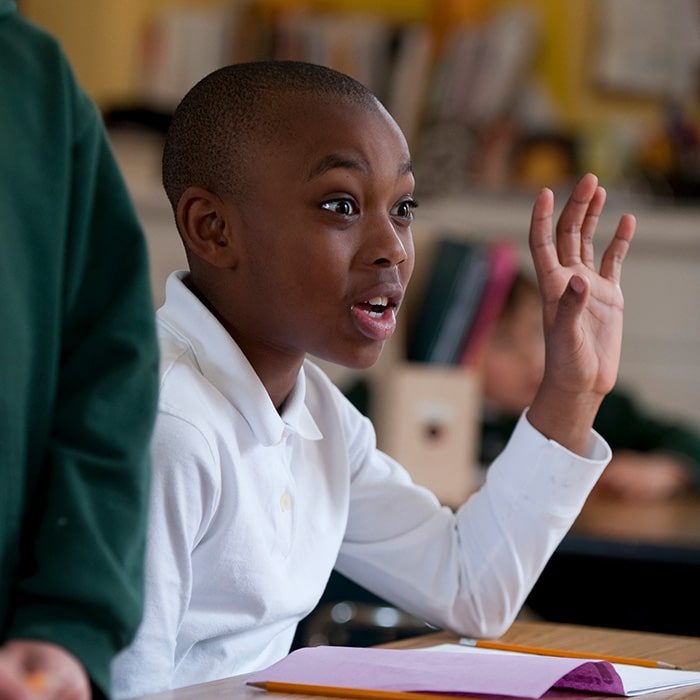
Development of
the whole child
Clanmore offers programming from Toddler to Middle School designed to complement the Montessori philosophy.


